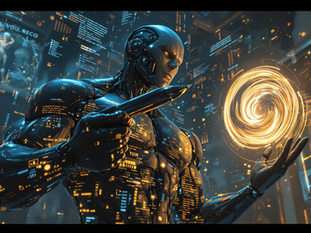
Back in college, I managed to change one of my professor’s interpretations of Heart of Darkness. Not because I had some grand theory prepared, but because I’d forgotten I was supposed to lead class that day and had to improvise. I compared Conrad’s story to Apocalypse Now — which it famously inspired — and to The Odyssey. In all three, the hero leaves the known world, crosses into the realm of chaos, and returns changed. For Odysseus, the journey was toward home. For Willard in Apocalypse Now, “home” was a return to the violence he’d been shaped by. I thought it was just a lucky bit of winging it, but my professor — Gary Gilbert, one of the best minds I’ve ever learned from — quoted me on it years later in another class. That meant something to me.
It wasn’t the only time I surprised him. In a class on cults and alternative religions, I presented on Mormonism… using clips from the South Park Joseph Smith episode as cultural commentary. He still gave me an A.
Looking back, I realize both moments came from the same place: treating big ideas seriously without taking myself too seriously. And that’s how I want to approach this next thought.
I’ve been chewing on it since those days: the idea that ancient gods weren’t just symbols or campfire myths — they may have been real, finite beings. Powerful enough to inspire fear and worship, but not the Creator. More like Baal in the Bible: a rival, not an equal. Maybe that’s why their stories echo across cultures and centuries. And maybe their disappearance wasn’t just myth fading — maybe they were pushed aside.
Some of these ancient figures were called gods, some were seen as kings, heroes, or demigods, but their fingerprints are everywhere. From Mesopotamian tablets to Greek epics, from Norse sagas to Mesoamerican carvings — the names change, the costumes change, but the personality types don’t.
It’s the same cast showing up to different audiences. The storm-bringer. The sea-lord. The war-god. The queen of fertility and destruction. The trickster who thrives on chaos.
If you take the Biblical narrative seriously, you see a framework for this. The Most High isn’t the only “elohim” — that Hebrew word just means “spiritual being.” Scripture depicts a divine council, with other beings assigned authority over the nations. Some remained loyal. Some rebelled. The rebels became the Baals, the Molechs, the Asherahs — not fake in the sense of nonexistent, but false in the sense of unworthy of worship.
So why don’t they run the show anymore? A few possible reasons:
God cast them down — the Biblical language of “chains of darkness” and “bound in gloomy pits” could be literal.
They lost their worship base — if their power was tied to human allegiance, centuries of neglect would shrink their influence.
They were eclipsed — as cultures shifted, new stories took the stage and memory dimmed.
But maybe “forgotten” doesn’t mean “gone.” If these beings were ever real, they would still be real. Energy doesn’t disappear — it changes form. The same is true of spirit. Scripture says, “Nothing new under the sun,” and if God is eternal, then the spiritual plane that holds these beings is also without end. Past and present aren’t separate realms — they’re layers on the same infinite field.
That means the gods of old aren’t relics of a dead mythology; they’re part of an ongoing reality we’ve simply stopped noticing. Maybe they weren’t mercenaries for Satan, but part of humanity’s formative years — pouring wine, blessing crops, sparking love, and sometimes stirring trouble so free will could take root. But just because they may have played a role in the story doesn’t make them the Author. Lose sight of that, and you risk mistaking a character in the play for the one who wrote it.





